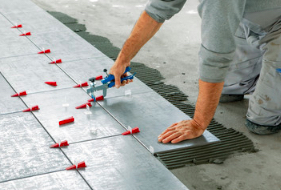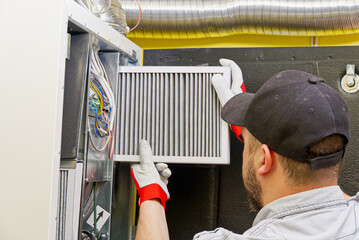Dock Repair adds value to your property and keeps your family safe. Regular inspections of your dock are vital for identifying issues like splintering wood, wobbly decking, and rust on metal parts of the pier.
Managing dock maintenance using scheduling data can prevent downtime by predicting problems before they occur. This includes restoring surfaces, checking connections and inspecting dock framing/posts.

When docks are used as a boating and swimming platform, they’re subjected to a lot of pressure from boats and water currents. Over time, this can cause damage that makes the structure dangerous to use. If you notice any signs of structural damage, it’s important to hire dock repair as soon as possible.
One of the most common issues that docks face is wood rot. This is caused by a fungus that affects the wood and causes it to break down over time. If left untreated, rotting wood can destroy the entire dock, so it’s vital to inspect your dock regularly for signs of rot and call in a professional as soon as possible.
Other common structural issues include cracking and warping. These problems can be caused by a variety of factors including water, stress, and even weather changes. If the cracking is on a non-load bearing support material, then it may be able to be repaired fairly easily, but if the cracks are on load-bearing supports, then they’ll need to be replaced.
Docks are also vulnerable to damage from saltwater and its effects on metal. This includes corrosion and rust, which can significantly reduce the lifespan of your dock. It’s important to inspect your dock regularly for corrosion and rust, and replace any sections that are damaged or have rusted through.
Loose boards are another problem that needs to be fixed right away. These can fall into the water and be hit by a passing boat or swimmer, potentially causing serious injury. If you’re concerned about the condition of your dock’s boards, it’s a good idea to replace them with new treated wood that will resist rot and fungal decay better than older wood.
It’s also a good idea to replace any metal hardware on your dock that’s showing signs of wear and tear, as this can be extremely dangerous. Minor rust can often be repaired with a coat of paint, but widespread rust could mean that it’s time to consider a full replacement. When you’re looking for the best dock repair in , you can count on us to deliver the highest quality service at a competitive price.
Docks are built to withstand powerful waves and tides, but they aren’t indestructible. Even well-maintained, promptly repaired docks will eventually reach the end of their lifespan and need to be replaced. Inspecting a dock regularly and taking care of any damage right away will prolong its lifespan and help you save money on repairs. However, it’s important to know when a dock is past repair and needs a complete replacement.
One sign that your dock is reaching the end of its life is wide cracks. These cracks will cause the dock to shift and become unsafe. If you notice a wide crack in your dock, it’s time to invest in a new one.
Wooden docks often experience rotting and deterioration over the years due to the constant exposure to water. Wood and concrete don’t play well together, so if you’re seeing signs of rot or deterioration, it’s time to replace your dock.
Metal docks are also susceptible to rust and decay. They can be fixed with a little bit of work, but if the rust or deterioration is widespread, it’s likely time to invest in a new dock.
While it’s normal for some bending and warping to occur, these changes can be dangerous. It’s a good idea to inspect your dock for any bending or warping at the beginning of each season. It’s possible to fix warped boards by hammering them back into place or replacing them, but you might have to replace your entire dock if it has been severely damaged.
Foundation deterioration is always a bad sign and usually indicates that it’s time for a total dock replacement. This foundation is what supports the entire structure, so when it’s compromised, the whole dock could come tumbling down with just a slight nudge.
Creaking and wobbling are other signs that your dock may be nearing the end of its life. This is because the dock is trying to compensate for a loss of stability or support. If you’re noticing these symptoms, it’s best to contact a professional to take a look at your dock.
Even with regular cleaning, sanding and staining, wood that comes in contact with water is going to deteriorate over time. When this deterioration becomes severe, it can affect the structural integrity of the dock and endanger people who use it. The best way to avoid this is to catch problems early by regularly inspecting the dock and taking action as soon as possible when damage is observed.
One of the most common signs that your dock is in need of repair is cracking of the platform and/or the supports. This can occur as a result of pressure from waves, currents, or vessel collisions and is incredibly dangerous. If the cracks are on non-load-bearing support materials, they may be repaired fairly easily but if there is extensive structural cracking then a full replacement of the dock will need to be considered.
Similarly, if you notice any signs of rust, it’s important to get these taken care of immediately. Rust is caused by metals contacting water and can cause serious damage if not addressed right away. A small amount of rust can be cleaned with home remedies, but significant amounts could require a full replacement of the affected metal parts.
Another sign of deterioration that needs to be addressed right away is loud racket coming from your dock. This noise usually indicates that there is metal-on-metal contact, and this can be extremely dangerous for anyone using the dock.
Docks along inland waterways are constantly exposed to extreme pressure from waves, currents, and vessels. This constant pressure can wreak havoc on the structures and leave them in need of immediate repair. The most common damage to these types of structures is rusting, cracks in the foundation, and rotting of the dock platform and/or supports.
If you notice any of these issues, it’s important to contact a professional right away to arrange for inspection and repairs. By catching these problems early, you can protect the integrity of your dock and the safety of everyone who uses it.
Many docks are built near bodies of water, which expose them to rain, wind and waves. Over time, these conditions can cause damage and deterioration. Keeping up with regular maintenance and repairs can help prevent costly problems down the line.
Like other structures, your dock may need to be inspected by a professional. An inspection costs $50 to $100 and is a great way to catch minor issues before they turn into major problems. The inspector will check the dock pilings, railings, decks and boat lifts for signs of damage or other issues. They will also look for safety hazards, such as broken electrical cables.
Docks are vulnerable to severe weather, such as hurricanes, that can cause flood and collapse. A storm surge can submerge a stationary dock and wash away railings, boards, and other parts of the structure. The resulting debris can damage the hulls of moored boats or fall onto other property below.
If a dock has been damaged, it can take weeks for a contractor to get to the site and begin construction. The cost to repair the dock and remove the debris can add up quickly. This can leave homeowners with a large bill, especially when the dock was destroyed by a hurricane.
While most home insurance policies exclude coverage for docks, some do include limited protection. Homeowners who have purchased Additional Living Expense (ALE) coverage may be covered for the cost to repair or replace a dock. This coverage is typically limited to 2%, 5%, or 10% of the homeowner’s policy’s building value.
A well-maintained dock can add value to a home, so it is important to inspect and maintain the structure regularly. It is also important to conduct routine maintenance before severe weather hits, such as a hurricane. A good rule of thumb is that a dock should be inspected and repaired once every year or as needed.
If your dock is damaged, contact a licensed insurance agent who specializes in writing coastal homeowners’ policies to review your coverage. If your dock is not protected by an ALE policy, it can be endorsed to include coverage under your homeowner’s insurance for a fee, although that will increase your premium.




 Most HVAC jobs are full-time, though some may have to work irregular hours in peak seasons. These positions require extensive training and a strong level of technical knowledge. HVAC technicians at
Most HVAC jobs are full-time, though some may have to work irregular hours in peak seasons. These positions require extensive training and a strong level of technical knowledge. HVAC technicians at